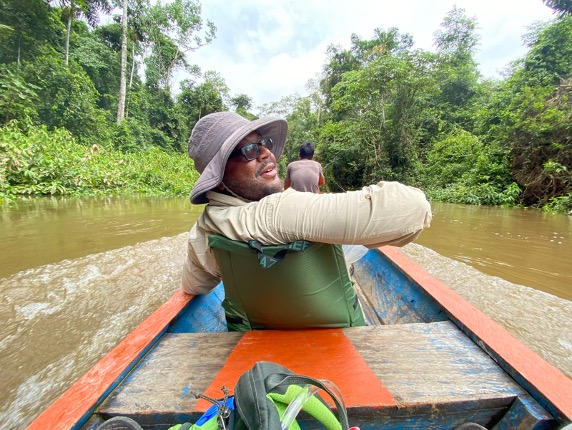Summary of A Delicate Balance: Preserving the Peruvian Amazon — Part One:
The author, Thomas Benson, participates in a research project in the Amazon rainforest with the Maijuna indigenous group. They set up trail cameras to capture images of animals that have returned to the Maijuna ancestral lands after the removal of loggers. This project is part of biocultural conservation, which helps preserve the indigenous people’s culture and way of life while preserving the ecosystem. The Peruvian government’s plan to construct a road through the Maijuna lands threatens hunting, a vital aspect of their cultural heritage. Many groups advocate for sustainable alternatives prioritizing environmental protection and indigenous rights. The Amazon rainforest is crucial in maintaining global climate stability and supporting indigenous communities. The author’s experience in the jungle was challenging but rewarding, and they learned from the Maijuna about their culture and the importance of preserving it. The article also includes a story told by one of the elders, highlighting the cultural exchange during the author’s time in the Amazon.
Participating in a research project in the Amazon rainforest opened my eyes to the unique and fascinating aspects of the delicate balance between preserving the Peruvian Amazon and the cultural heritage of the indigenous Maijuna group. Alongside the Detroit Zoological Society and OnePlanet, a nonprofit dedicated to empowering indigenous communities, we worked with the Maijuna to set up trail cameras in the jungle, capturing images of the diverse animal species that have returned to their ancestral lands after illegal logging activities were stopped.
What struck me the most was the concept of biocultural conservation, which entails simultaneously preserving the ecosystem and indigenous people’s culture. The Maijuna have a profound connection to the Amazon’s land, water, and animals, and their cultural traditions revolve around hunting, sustainable practices, and land management. Proposed road construction by the Peruvian government could potentially destroy this way of life, making the trail camera project crucial in helping to protect Maijuna’s cultural heritage.
This issue is not unique to Peru; it is a global debate between development and environmental preservation. Activists, scientists, and indigenous groups have united to advocate for sustainable alternatives. Comprehensive environmental impact assessments, consideration of indigenous rights, and investment in alternative transportation and infrastructure are key factors in protecting Amazon’s fragile ecosystem. The rainforest is important in maintaining global climate stability and supporting indigenous communities, making preserving this region vital.
Engaging with the Maijuna during our research project was both challenging and rewarding. The intense heat, humidity, bugs, and other jungle animals presented physical obstacles, but the kind and welcoming spirit of the Maijuna overshadowed any negatives. Learning from experts like Victorino Rios Torres, who shared his extensive knowledge of the forest and the traditional use of plants and animals, was awe-inspiring.
Sebastian “Shebaco” Rios Ochoa, one of the elders and founders of Sucusari, imparted the origin story of the giant river otters living in the Amazon River. It was a mesmerizing moment of cultural exchange that showcased the rich heritage of the Maijuna people. Such experiences are essential for helping students appreciate and understand different cultures and ways of life.
As an educator, immersing ourselves in diverse environments and working with indigenous communities is crucial for deepening our understanding of their challenges. The trip to the Peruvian Amazon allowed me to better appreciate the Maijuna’s way of life and the importance of preserving their cultural traditions.
The ongoing debate surrounding the proposed road construction is a global reminder of the urgency to protect and preserve our planet’s invaluable natural ecosystems. The Peruvian government faces a challenging task in evaluating the potential benefits of development against the potential consequences for biodiversity, climate change, and the rights of indigenous communities.
By sharing my experiences in the Peruvian Amazon and highlighting the unique and fascinating aspects of the delicate balance between preservation and development, I hope to inspire others to appreciate and respect the natural world and its cultures. Our actions today will determine the future of our planet, and we must prioritize preserving our ecosystems alongside preserving cultural heritage.

